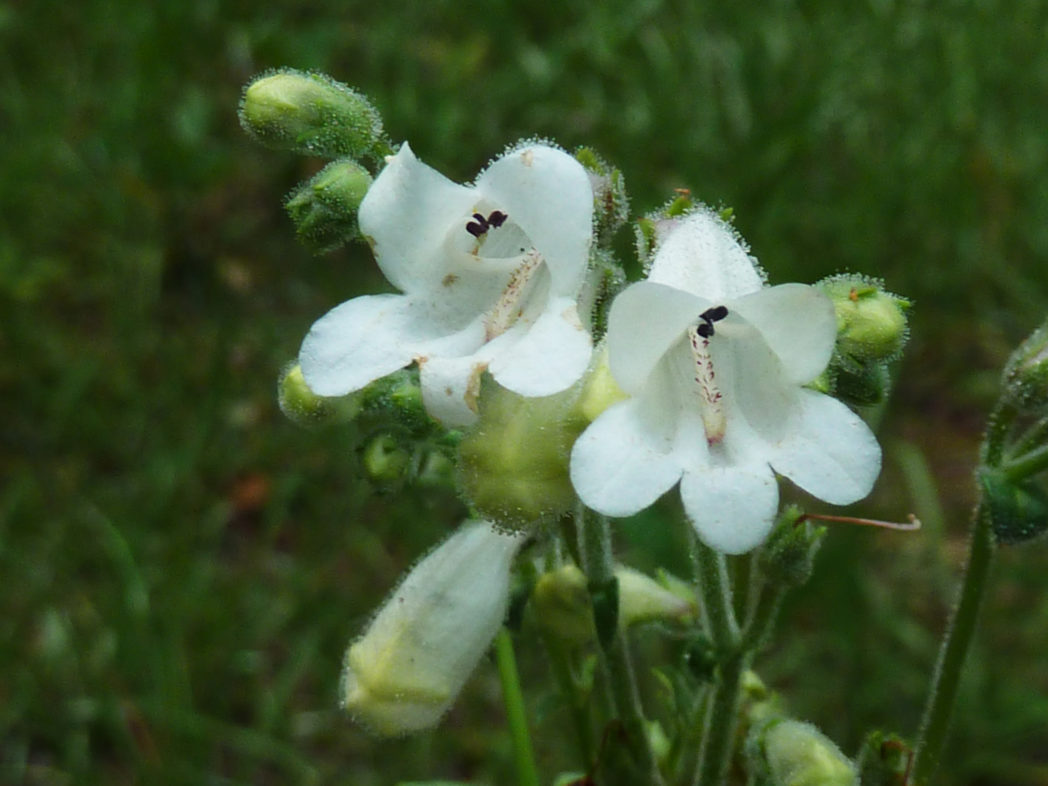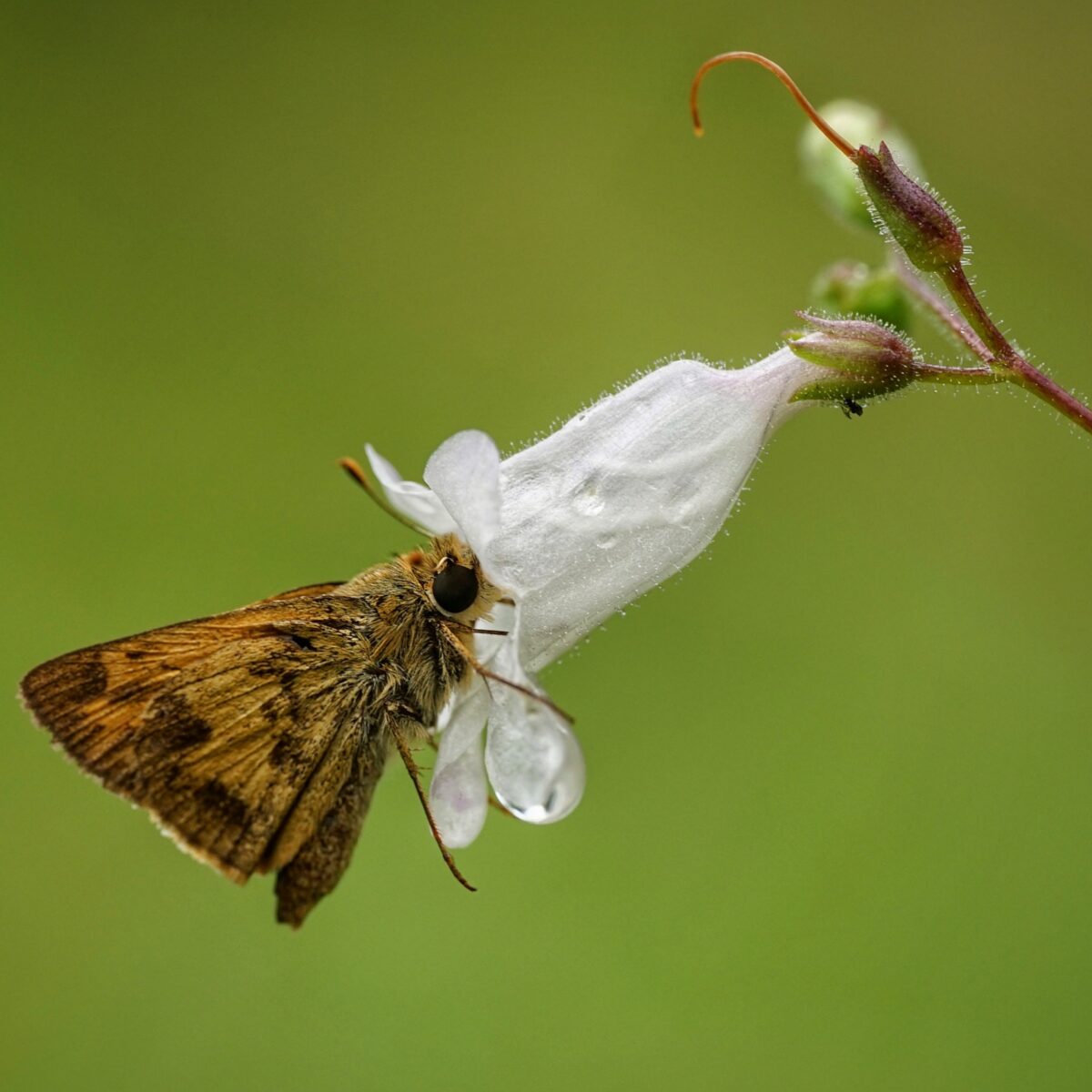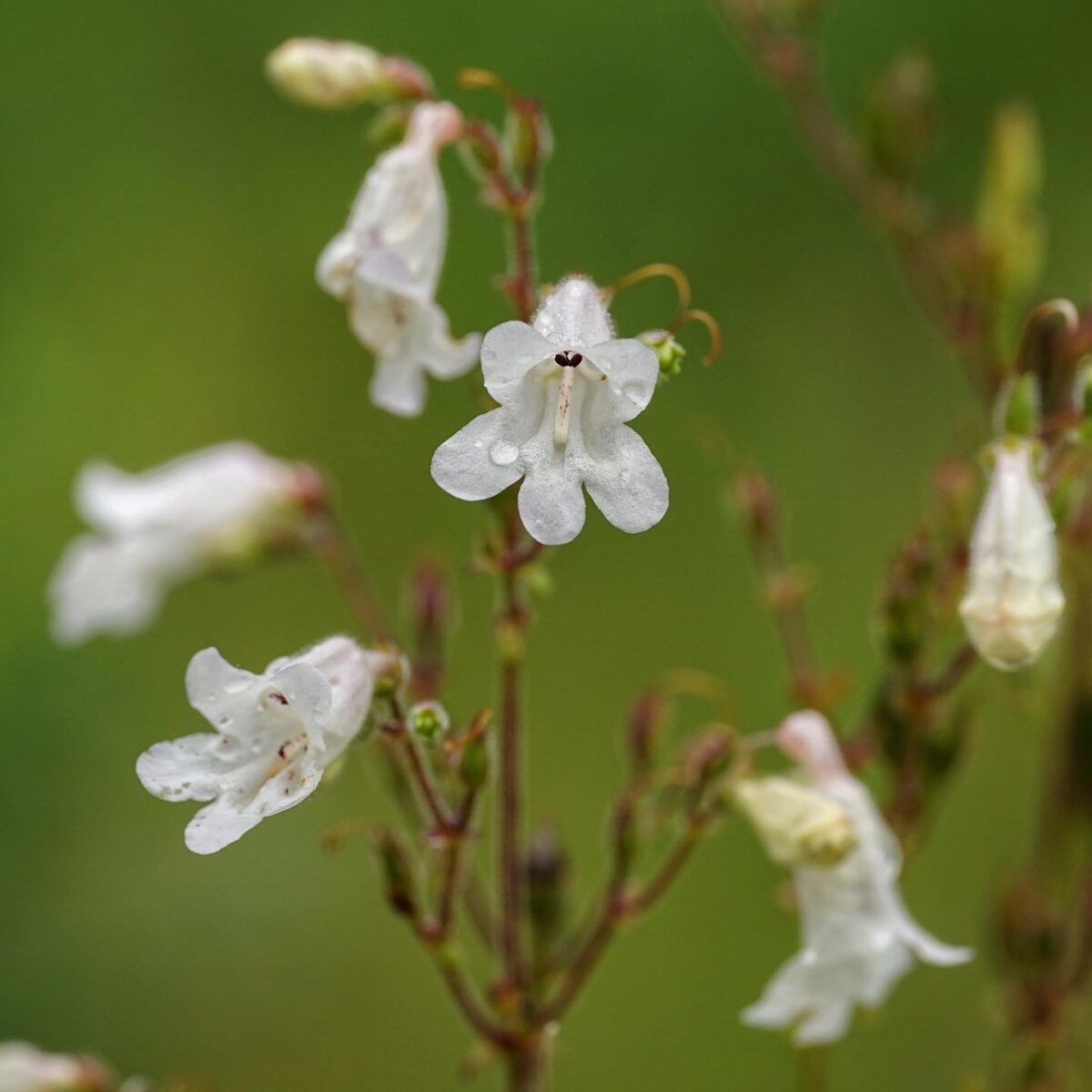Manyflower beardtongue
Pictured above: Manyflower beardtongue (Penstemon multiflorus) by Eleanor Dietrich. Click on terms for botanical definitions. View post as a PDF.
Manyflower beardtongue (Penstemon multiflorus) (also known as White beardtongue) is a deciduous perennial wildflower. It blooms in spring and summer and occurs naturally in scrub, sandhills, scrubby flatwoods and ruderal areas. Manyflower beardtongue is almost endemic to Florida, with only a few populations in Alabama and Georgia. It attracts a number of pollinators, including hummingbirds.
The plant’s showy white to light lavender flowers are born in terminal panicles on oppositely arranged stalks. Each flower is 5-lobed, 2-lipped and tube-shaped. Calyces are 5-lobed and hairy. Stems are erect, reddish in color and emerge from a basal rosette of large, grayish-green leaves. Stem leaves are sessile and oblong to lanceolate with entire or slightly toothed margins. They are oppositely arranged and become reduced as they ascend the stem.
The species epithet multiflorus is from the Latin multus, or “many,” and florus, or “flower,” and refers to the many flowers born on each flower stalk. The common name “beardtongue” refers to the tendency of blooms within the Penstemon genus to have a long, often hairy filament that protrudes from the mouth of the corolla, giving the appearance of a fuzzy tongue.
Family: Plantaginaceae (Plaintain family)
Native range: Nearly throughout Florida
To see where natural populations of Manyflower beardtongue have been vouchered, visit www.florida.plantatlas.usf.edu.
Lifespan: Perennial
Soil: Well-drained soils
Exposure: Full sun to minimal shade
Growth habit: 3–4’ tall
Propagation: Seed
Florida regions of landscape suitability: North, Central, South
Garden tips: Manyflower beardtongue works well in wild or naturalistic settings as well more formal gardens. Masses of these tall, white bloom stalks are a showstopper. The plant spreads on it own by reseeding and by producing “pups” from the main rosette.
Manyflower beardtongue is are often available at nurseries that specialize in Florida native plants. Visit PlantRealFlorida.org to find a native nursery in your area. Seeds may be available from the Florida Wildflower Growers Cooperative at www.FloridaWildflowers.com.
Learn more about Manyflower beardtongue from the Florida Native Plant Society and the Institute for Regional Conservation.



